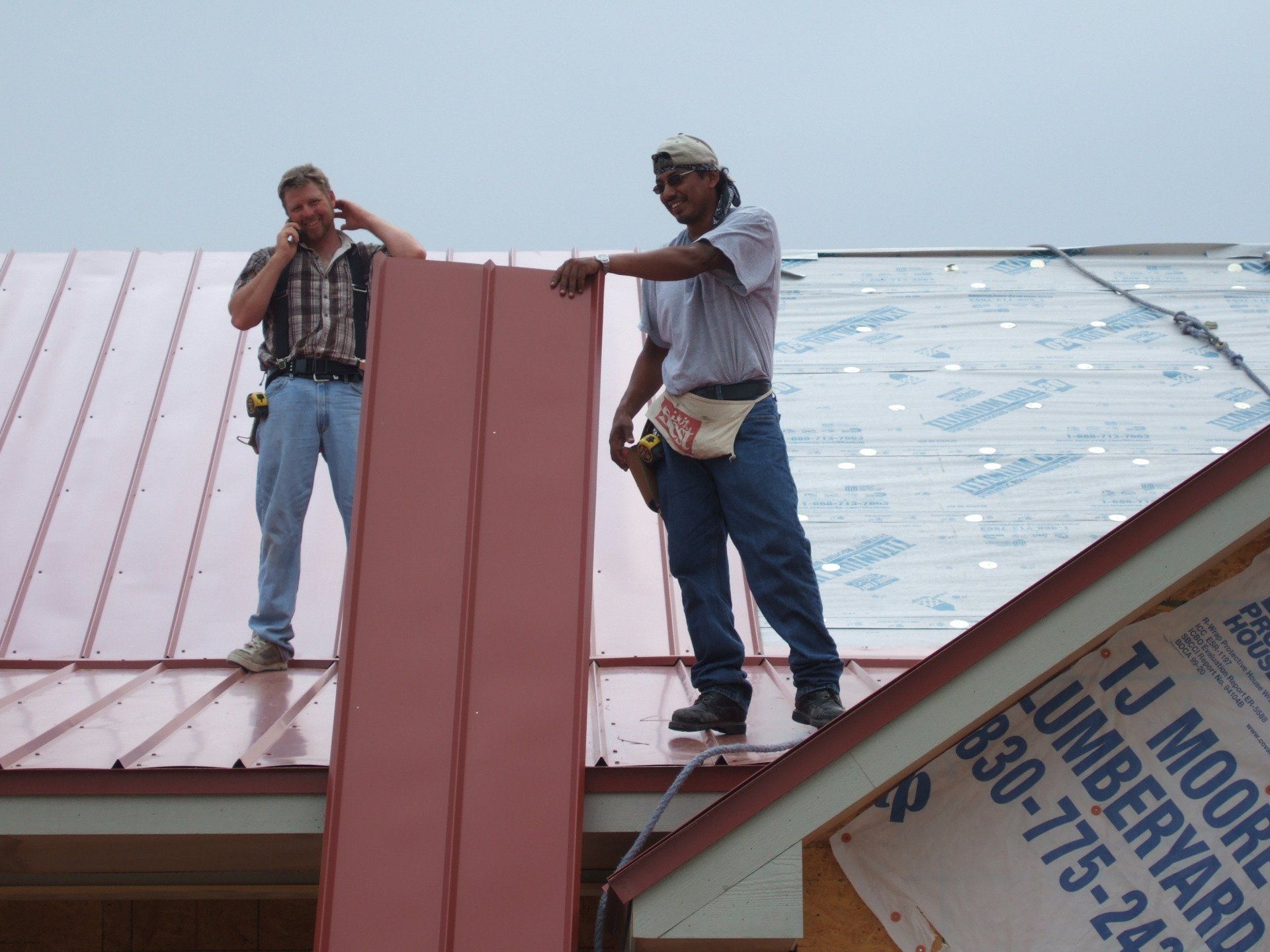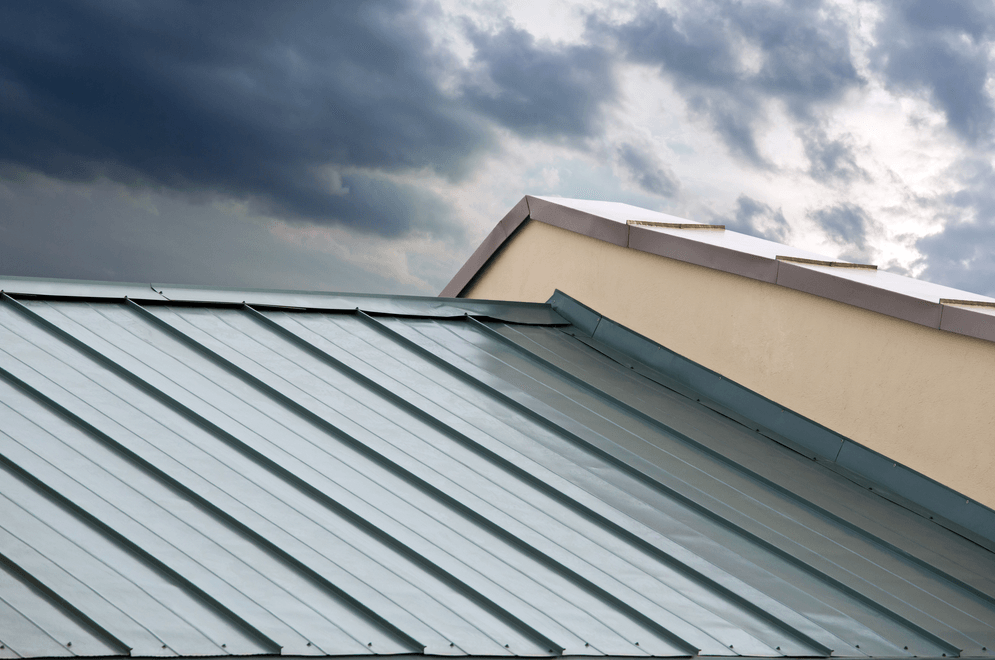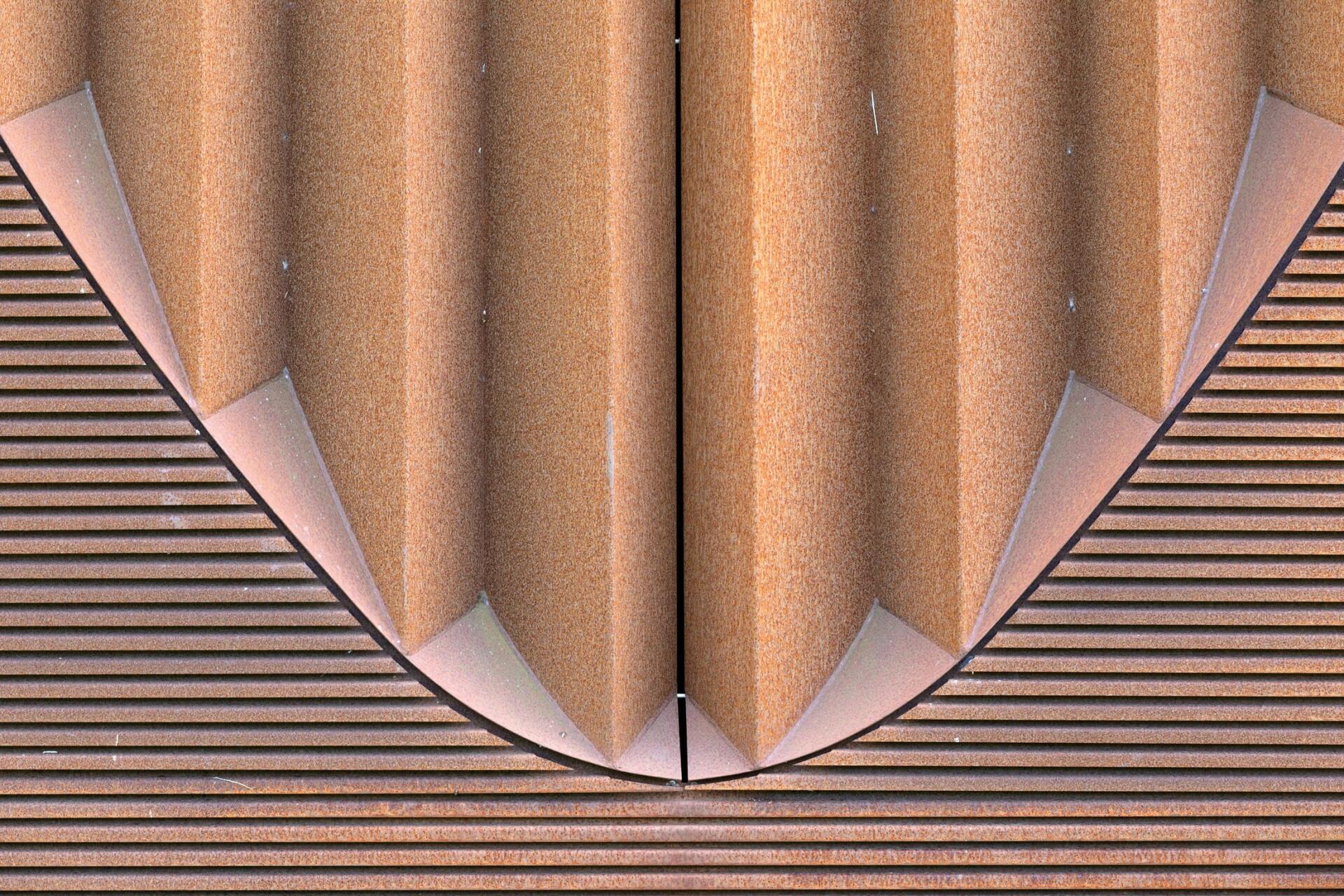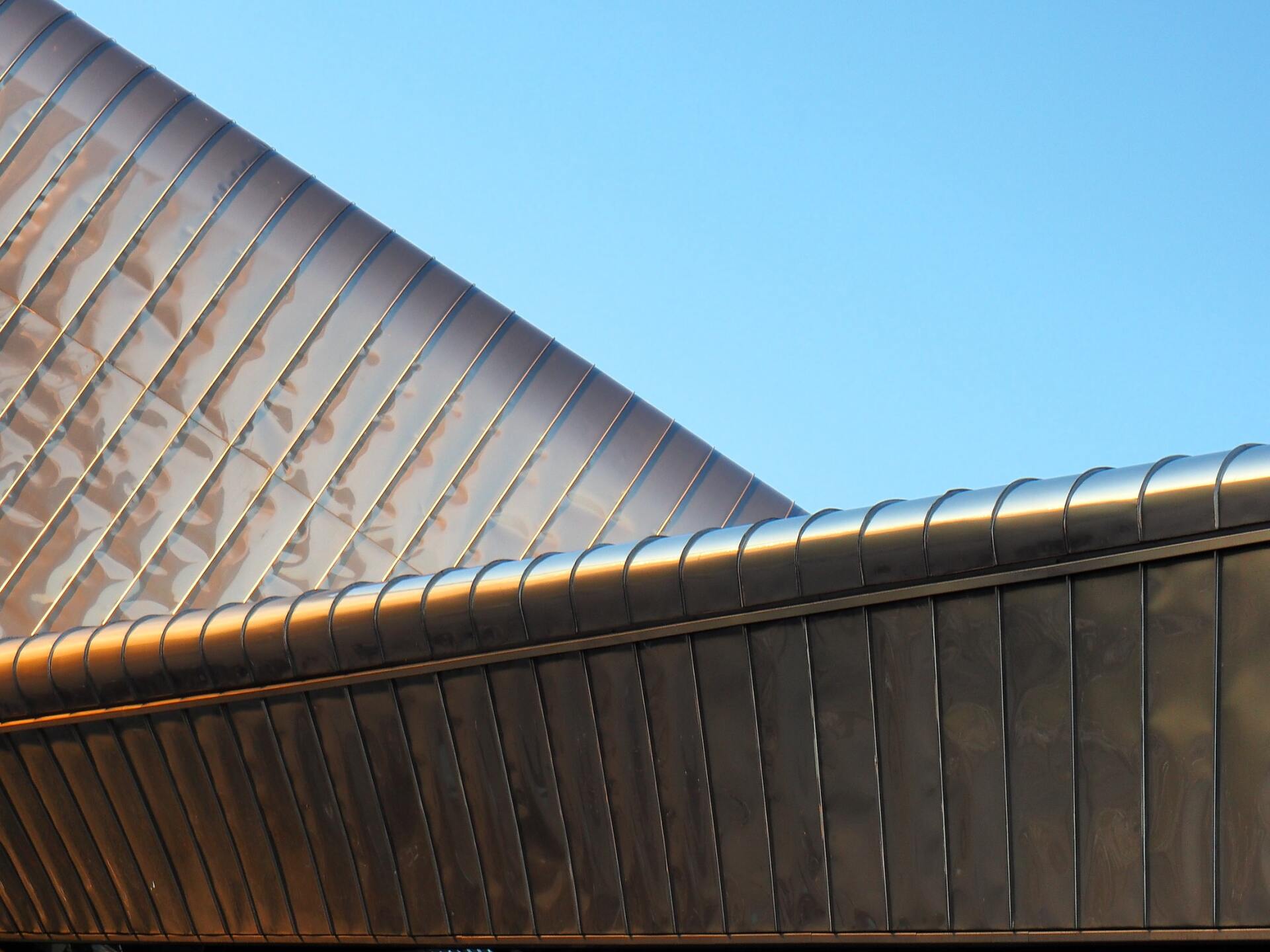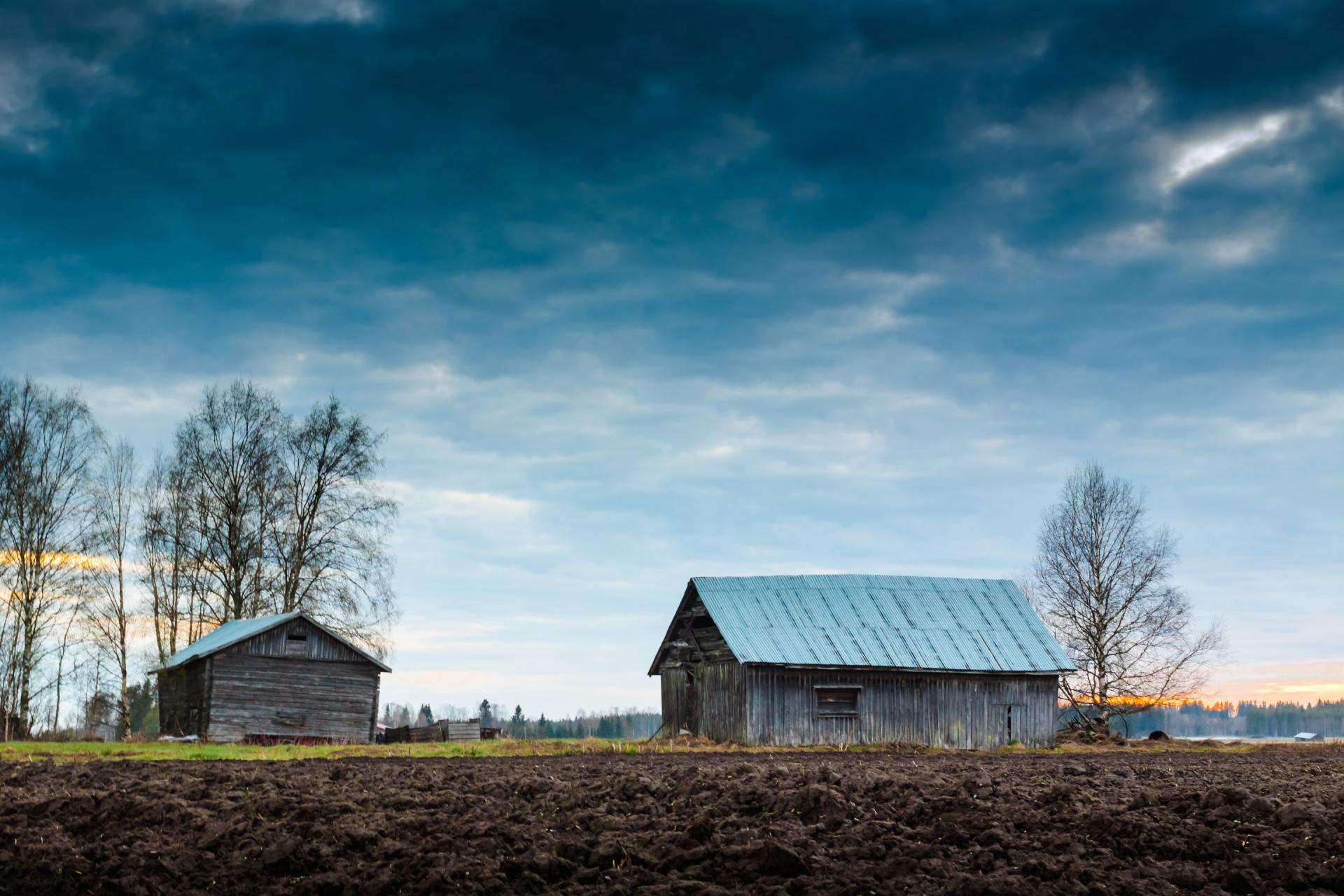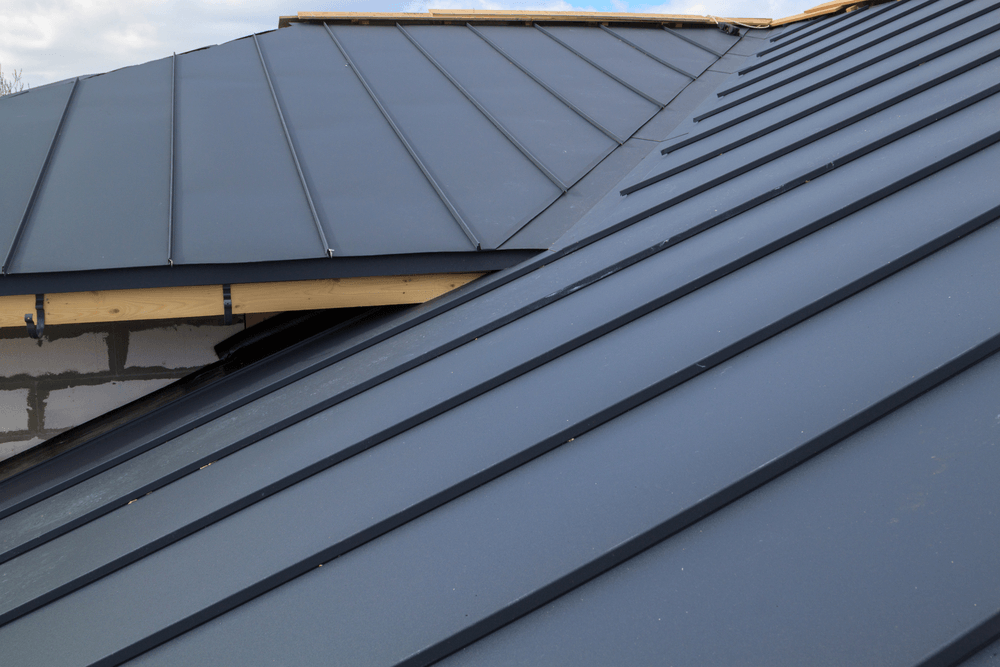DIY Installing a Metal Roof
February 17, 2020
Get A Free Quote Today!
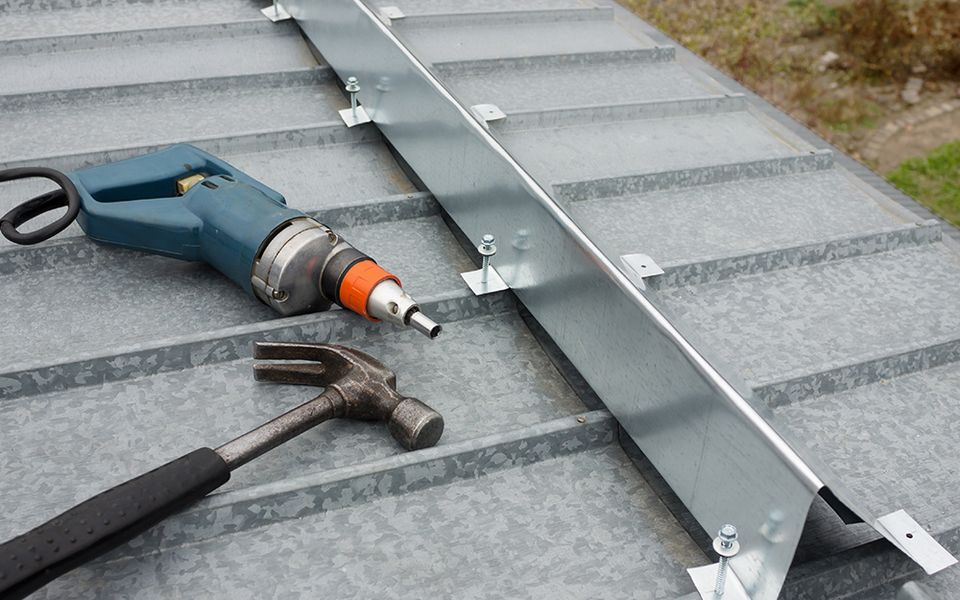 Get A Free Quote Today!
Get A Free Quote Today!
We're an all-purpose metal supply company based in central Texas, and we've been providing high-quality metal supplies to individual and industrial customers since our founding. Our on-site, roll-formed metal panels are the best on the market and are reusable and recyclable for environmentally conscious customers. The first step to installing your own DIY roofing on your house is to learn about the process, so read on to find a comprehensive guide to installing a metal roof.
Why Metal Roofing?
The most significant selling point of metal roofing is that it's the most environmentally friendly option on the market. It reduces the energy consumption of your house significantly. In the hot Texas summer, roofs can absorb heat quickly, which causes higher air conditioning use. Near-white metal roofs can reduce the energy consumption of your house by over a quarter.
You'll save money and effort when you use metal roofing because this durable natural material lasts far longer than the average shingled roof, with the lifespan depending on the metal used. Most metal roofs are made from recycled metal, melted down into the coils and sheets needed for roofing. With metal roofing, you're working with one of the most commonly recycled items, so you can rest easy knowing none of your roofing winds up in a landfill.
Choose Your Metal
The most important decision when installing DIY roofing is to pick the right metal for your housing and installation needs. While there are many different options, each with their own benefit, here are 5 common options:
Tin
Tin is the most commonly used metal in roofing because it's lightweight, easy to lay, and affordable, but it can cause noise during wind or rain.
Copper
Copper is considered one of the most attractive metals for roofing—it won't rust even without a protective coat of paint. But this lightweight metal is one of the more expensive choices. It is a soft metal that can be easily dented by hailstones, but overall, holds up better than its competition. It is also known for being corrosive-resistant.
Aluminum
Aluminum is lightweight and rust-resistant, making it a popular choice for coastal climates where saltwater corrosion is a worry. Aluminum is often painted to maintain its aesthetic over the years. As with copper, this option is also often more expensive than others.
Galvanized Steel w/Zinc
Galvanized steel, coated with a thin zinc layer, is a decades-long lasting, durable choice that is costliest but worth it if you're looking to protect your roof long-term.
Zinc
Zinc is a costly but rust-resistant choice best used in mild climates, and corrugated metal roof panels are gaining popularity due to their durability and energy efficiency. Zinc is a more expensive option, but is also very environmentally-friendly as zinc has a lower melting point, and therefore lower energy use during production. Zinc can even self-repair any minor scratches, nicks, or other minor damages from the environment.
Collect Your Tools
Before you install your roof, you'll want to gather everything you need for a safe and thorough installation—starting with protective gloves, boots, and eyewear for personal safety. Before ordering your metal from our supplier in Kyle, Texas, you'll want a thorough measurement of your roof, so you'll need measuring tools large enough to cover a standard roof. Once you have your exact measurements and have picked your metal, you are ready to place an order!
Once you have your safety gear and your metal supplies, it's time to collect the tools you'll need for installation. You'll need a selection of saws, both manual and automated, to cut your metal roofing into place. A power drill and a hammer are essential for securing the sheets into place on your roof, and you'll want a full supply of nails and screws to ensure you don't run out in the middle of a job.
The next supplies you'll need are the ones you need to finish the job. These include transition and drip flashing, and gutter supplies if you're removing your existing gutter. You'll want a collection of safe but reliable adhesives and sealants to close off any minor gaps in your roofing, as one small opening can ruin a roof's leak-proof promise.
Finally, you'll need a trash bin or other waste disposal system to keep your shavings and other waste in one safe and clean location.
Prep the Roof
When you start work, the first step is to remove any old roofing and do a comprehensive sweep for damage that could prevent the new roof from taking hold or lead to leaks. You'll want to start from the roof's top and remove old shingles along with any remaining flashing or vents, eliminating any material you plan to replace. If there are any large nails under the old roof, remove them with the peen of your hammer or hammer them down to keep them from interfering with the new material.
Before you nail down any new roofing, make sure the roof sheathing is intact and hasn't been damaged by the old roofing or the elements. If any repairs to the foundation need to be made, we recommend professional assistance for this critical area. The last step before installing your roof is adding a layer of roofing insulation to conserve energy.
Install Your Edging
Drip flashing, also known as edging, is a curved sheet of metal installed at the edge of your roof to control the flow of water into the gutters and prevent standing water. You'll want to use standard nails to outline the edge of your roof in a full rotation with metal flashing, placing the corner pieces where the panels will meet. To ensure ideal interaction with the gutters, the edging should overhang the gutter's lip by around half an inch.
Install Your Metal Roofing
For this segment, we're assuming you are working with the classic metal sheets from Hill Country Metal Roofing Supply, but other styles are available. Your metal sheets will be delivered whole and rolled out on-site, eliminating the need for shipping and making last-minute changes easy. Once your sheets are measured and cut, they should be aligned on your roof to overlap the edging by over half an inch and be square to the roof-line.
Every panel should be laid with the larger edge under the small edge of the next panel, creating a protective barrier that keeps the roofing from getting loose in high winds. Then it's time to insert your roofing screws, with the screws placed vertically along each rib in the roofing panel. Screws should be between 18 and 24 inches apart, with the first one being seven inches from the bottom.
Once your panels are in place, you'll want to seal them with a bead of silicone sealant on the underside, cutting off any potential leak areas and creating an airtight seal on your roof.
Finishing the Job
Congrats! Your DIY roofing project is almost finished. Next, you will add the roof vents and flashing to keep your roof as energy efficient and durable as possible.
Roof Ventilation
A roof ventilation kit makes it easy to install these critical vents without professional help. The vents should be installed into pre-drilled holes near the top of the roof. The area around the vents should be sealed with the silicone sealant to ensure air and heat only escape through the designated vents.
Flashing
Flashing is the metal trim that fits over the joints connecting sections of the roof. This prevents water from seeping in through the connections. The flashing should be bent into a V-shape and fitted over the top of the roof's ridge and the corners and overlap the roof by an inch to make sure the water is directed away from the roof.
The Strongest Roof You've Ever Had—Installed With Your Own Two Hands
If you've been dealing with roof shingles, you know that these materials are more likely to be damaged in bad weather and wear out sooner than you might like. Those problems can be a thing of the past when you install your own metal roof. Bu—a metal roof is only as good as the materials you use. Choose a trustworthy supplier who delivers the best-quality metal sheets, cut to order on-site to ensure the perfect fit.
Installing your DIY roofing is easier than you think when you have the right partner, so contact Hill Country Metal Roofing Supply for more information on our materials or to request a quote today.
Get A Free Quote Today!
A Comprehensive Guide to Installing a Metal Roof

If your current roof is aging, and you want your money and efforts to go toward an option that will stand the test of time, now is the perfect time to consider the shift to metal roofing. Not only is metal roofing superior for its longevity and eco-friendliness—more homeowners are installing metal roofing themselves.
DIY roofing is an appealing option for handy homeowners. With the best materials at hand, Hill Country Metal Roofing Supply is here to help.
We're an all-purpose metal supply company based in central Texas, and we've been providing high-quality metal supplies to individual and industrial customers since our founding. Our on-site, roll-formed metal panels are the best on the market and are reusable and recyclable for environmentally conscious customers. The first step to installing your own DIY roofing on your house is to learn about the process, so read on to find a comprehensive guide to installing a metal roof.
Why Metal Roofing?
The most significant selling point of metal roofing is that it's the most environmentally friendly option on the market. It reduces the energy consumption of your house significantly. In the hot Texas summer, roofs can absorb heat quickly, which causes higher air conditioning use. Near-white metal roofs can reduce the energy consumption of your house by over a quarter.
You'll save money and effort when you use metal roofing because this durable natural material lasts far longer than the average shingled roof, with the lifespan depending on the metal used. Most metal roofs are made from recycled metal, melted down into the coils and sheets needed for roofing. With metal roofing, you're working with one of the most commonly recycled items, so you can rest easy knowing none of your roofing winds up in a landfill.
Choose Your Metal
The most important decision when installing DIY roofing is to pick the right metal for your housing and installation needs. While there are many different options, each with their own benefit, here are 5 common options:
Tin
Tin is the most commonly used metal in roofing because it's lightweight, easy to lay, and affordable, but it can cause noise during wind or rain.
Copper
Copper is considered one of the most attractive metals for roofing—it won't rust even without a protective coat of paint. But this lightweight metal is one of the more expensive choices. It is a soft metal that can be easily dented by hailstones, but overall, holds up better than its competition. It is also known for being corrosive-resistant.
Aluminum
Aluminum is lightweight and rust-resistant, making it a popular choice for coastal climates where saltwater corrosion is a worry. Aluminum is often painted to maintain its aesthetic over the years. As with copper, this option is also often more expensive than others.
Galvanized Steel w/Zinc
Galvanized steel, coated with a thin zinc layer, is a decades-long lasting, durable choice that is costliest but worth it if you're looking to protect your roof long-term.
Zinc
Zinc is a costly but rust-resistant choice best used in mild climates, and corrugated metal roof panels are gaining popularity due to their durability and energy efficiency. Zinc is a more expensive option, but is also very environmentally-friendly as zinc has a lower melting point, and therefore lower energy use during production. Zinc can even self-repair any minor scratches, nicks, or other minor damages from the environment.
Collect Your Tools
Before you install your roof, you'll want to gather everything you need for a safe and thorough installation—starting with protective gloves, boots, and eyewear for personal safety. Before ordering your metal from our supplier in Kyle, Texas, you'll want a thorough measurement of your roof, so you'll need measuring tools large enough to cover a standard roof. Once you have your exact measurements and have picked your metal, you are ready to place an order!
Once you have your safety gear and your metal supplies, it's time to collect the tools you'll need for installation. You'll need a selection of saws, both manual and automated, to cut your metal roofing into place. A power drill and a hammer are essential for securing the sheets into place on your roof, and you'll want a full supply of nails and screws to ensure you don't run out in the middle of a job.
The next supplies you'll need are the ones you need to finish the job. These include transition and drip flashing, and gutter supplies if you're removing your existing gutter. You'll want a collection of safe but reliable adhesives and sealants to close off any minor gaps in your roofing, as one small opening can ruin a roof's leak-proof promise.
Finally, you'll need a trash bin or other waste disposal system to keep your shavings and other waste in one safe and clean location.
Prep the Roof
When you start work, the first step is to remove any old roofing and do a comprehensive sweep for damage that could prevent the new roof from taking hold or lead to leaks. You'll want to start from the roof's top and remove old shingles along with any remaining flashing or vents, eliminating any material you plan to replace. If there are any large nails under the old roof, remove them with the peen of your hammer or hammer them down to keep them from interfering with the new material.
Before you nail down any new roofing, make sure the roof sheathing is intact and hasn't been damaged by the old roofing or the elements. If any repairs to the foundation need to be made, we recommend professional assistance for this critical area. The last step before installing your roof is adding a layer of roofing insulation to conserve energy.
Install Your Edging
Drip flashing, also known as edging, is a curved sheet of metal installed at the edge of your roof to control the flow of water into the gutters and prevent standing water. You'll want to use standard nails to outline the edge of your roof in a full rotation with metal flashing, placing the corner pieces where the panels will meet. To ensure ideal interaction with the gutters, the edging should overhang the gutter's lip by around half an inch.
Install Your Metal Roofing
For this segment, we're assuming you are working with the classic metal sheets from Hill Country Metal Roofing Supply, but other styles are available. Your metal sheets will be delivered whole and rolled out on-site, eliminating the need for shipping and making last-minute changes easy. Once your sheets are measured and cut, they should be aligned on your roof to overlap the edging by over half an inch and be square to the roof-line.
Every panel should be laid with the larger edge under the small edge of the next panel, creating a protective barrier that keeps the roofing from getting loose in high winds. Then it's time to insert your roofing screws, with the screws placed vertically along each rib in the roofing panel. Screws should be between 18 and 24 inches apart, with the first one being seven inches from the bottom.
Once your panels are in place, you'll want to seal them with a bead of silicone sealant on the underside, cutting off any potential leak areas and creating an airtight seal on your roof.
Finishing the Job
Congrats! Your DIY roofing project is almost finished. Next, you will add the roof vents and flashing to keep your roof as energy efficient and durable as possible.
Roof Ventilation
A roof ventilation kit makes it easy to install these critical vents without professional help. The vents should be installed into pre-drilled holes near the top of the roof. The area around the vents should be sealed with the silicone sealant to ensure air and heat only escape through the designated vents.
Flashing
Flashing is the metal trim that fits over the joints connecting sections of the roof. This prevents water from seeping in through the connections. The flashing should be bent into a V-shape and fitted over the top of the roof's ridge and the corners and overlap the roof by an inch to make sure the water is directed away from the roof.
The Strongest Roof You've Ever Had—Installed With Your Own Two Hands
If you've been dealing with roof shingles, you know that these materials are more likely to be damaged in bad weather and wear out sooner than you might like. Those problems can be a thing of the past when you install your own metal roof. Bu—a metal roof is only as good as the materials you use. Choose a trustworthy supplier who delivers the best-quality metal sheets, cut to order on-site to ensure the perfect fit.
Installing your DIY roofing is easier than you think when you have the right partner, so contact Hill Country Metal Roofing Supply for more information on our materials or to request a quote today.
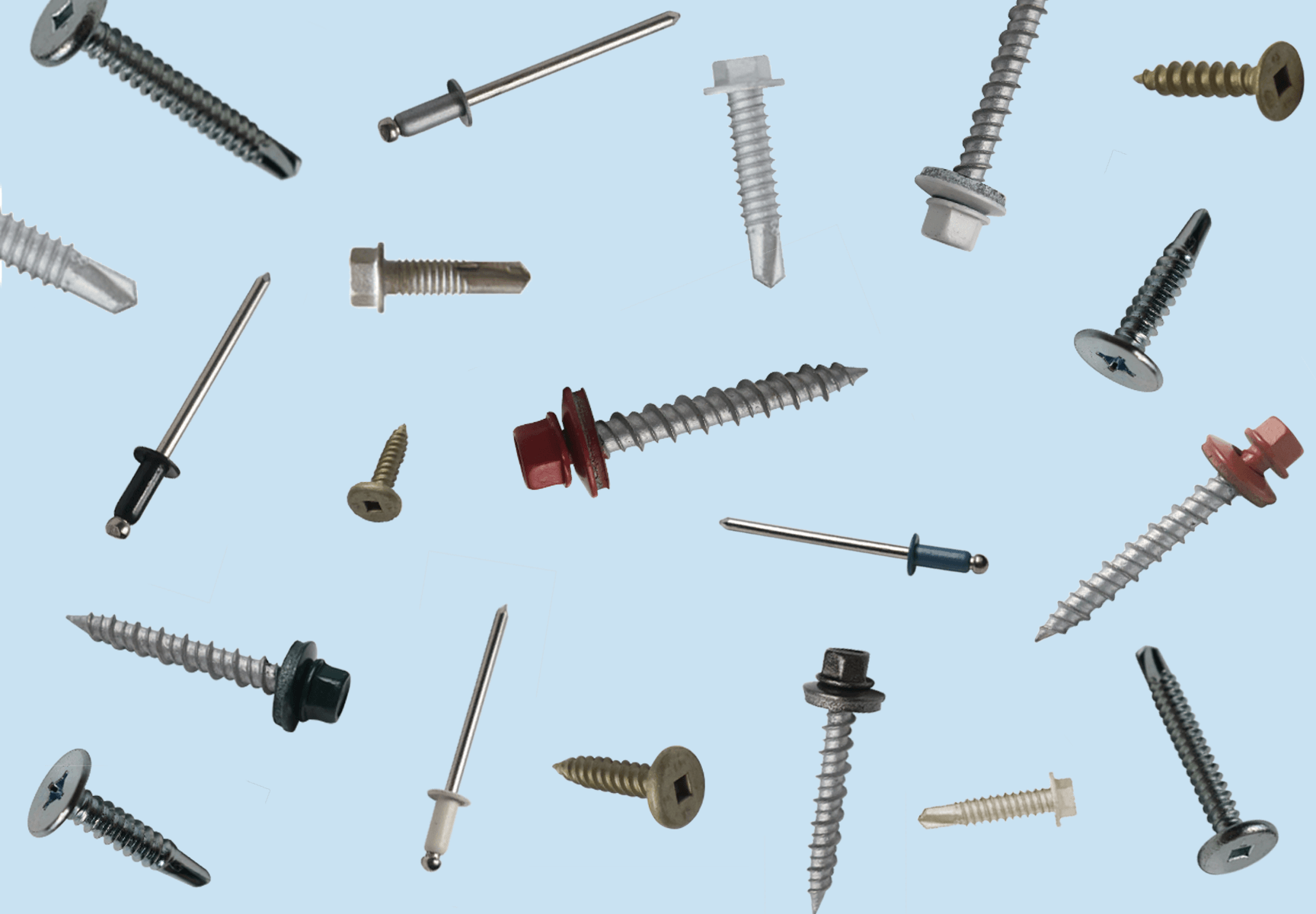
Choosing to install a metal roof is an excellent decision for numerous reasons, including the fact that it will last much longer than a traditional roof, is more energy-efficient, and is better for the environment. However, there are some accessories that are highly recommended for your metal roof that will help make it more effective. These nine metal roof accessories will not only greatly enhance your roof's effectiveness, but will also increase its durability as well.
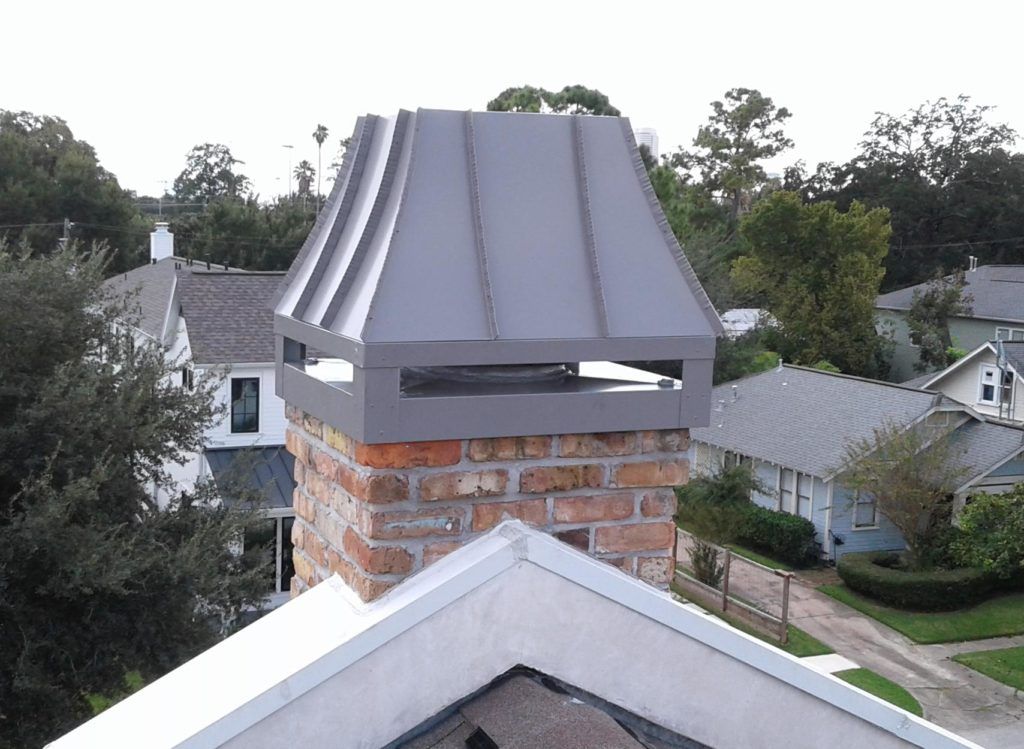
How heavy is a metal roof? You might be surprised to learn that it is one of the lightest options. Metal roofs are lighter than asphalt shingles, clay & concrete tiles. The weight of 26-gauge metal roofing is approximately just under one pound per square foot. The weight of 24-gauge metal roofing is about 1.15 pounds. The lower the gauge of the metal, the thicker and heavier the material will be.
